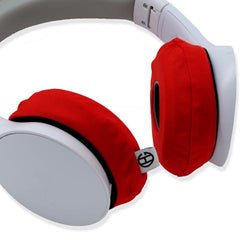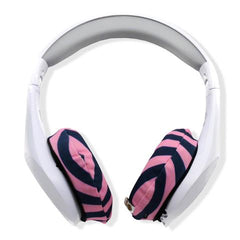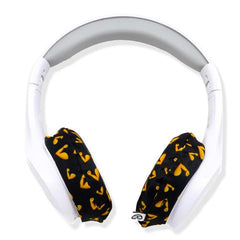What is Moisture Wicking?

Moisture-wicking material is commonly found in athletic sportswear. Often made from man-made fibres such as polyester, it’s wide surface area means it can quickly move sweat to the fabric’s outer surface to be evaporated away from the body. It absorbs very little water compared to cotton.
How Stuff Works gives this example on how moisture-wicking works: “Just like a candle draws wax up the wick to the flame, wicking fabric pulls moisture from the body to the exterior of the shirt.”
This is called capillary action and what’s happening in your moisture-wicking clothing is actually very similar to what capillaries in the human body do. Capillaries are small blood vessels that feed oxygenated blood to the body’s tissues. Lumen Learning describes this as ‘the ability of a liquid to flow in narrow spaces without the assistance of, and in opposition to, external forces such as gravity.’
Water moving through a paper towel is an example of capillary action. So, too, is a plant taking on water through its roots or using a drinking straw to enjoy a glass of water.
What Fabric is Moisture Wicking?
Most moisture-wicking material is synthetic. Polyester and nylon, for example, are often used in sportswear as they’re not ‘water-friendly’ which means they don’t absorb liquids very well. You’re likely to see spandex and polypropylene on clothing labels, too. Some big brands have specifically trademarked their moisture-wicking clothing signalling to customers that they’re buying performance wear. Nike has Dri-Fit. Under Armor has HeatGear, and GoreTex is another trademarked name.
Not all moisture-wicking fabrics are synthetic, however. You might be surprised to find that both wool and bamboo have excellent ‘dry’ qualities. Merino wool is particularly popular if you’re hiking or exercising in a cool environment where sweat left on a shirt could cause the body’s temperature to drop whenever physical exertion slows.
Wool has the added advantage as it resists odours in a way than man-made sweat-wicking fabrics don’t.

Do Moisture Wicking Fabrics Keep You Cool?
Yes. Moisture-wicking fabric isn’t just about keeping you comfortable but it’s also designed to help keep you cool when exercising. Evaporation is how our body naturally regulates its temperature and so, as a moisture-wicking facilitates this, you’ll be cooler than if you were wearing cotton, for example.
Do Moisture Wicking Fabrics Keep You Warm?
Yes, and incidentally it’s the same process keeping you warm as keeping you cool. Moisture makes it harder to stay warm so if there’s no moisture — thanks to the wicking fabric — then you’re less likely to feel the cold. Sweat-wicking clothing is often used as base-layers for people who hike or climb in environments where maintaining warmth is essential.
Moisture Wicking Vs DriFit Vs HeatGear.
DriFit is just moisture-wicking clothing made by Nike. HeatGear is made by Under Armor and both use moisture-wicking fabrics in their sports performance lines.

Are EarHugz Moisture Wicking?
Yes. EarHugz were designed to move sweat away from your headphone cushions quickly and efficiently. Sweat is corrosive and it can damage both the earpads and the internal components of your headphone. Made from 82% polyester and 18% spandex, they wick sweat away before it can crack, wrinkle and peel the cushioning material. Sweat-proof covers will help to keep your headphones fresh and functioning for many years to come no matter how hard you’re hitting the gym.
Are EarSnugz Moisture Wicking?
EarSnugz are headphone earmuffs designed to be worn in the colder weather to help keep your ears toasty warm and to help make on-ear and over-ear headphones more comfortable. They don’t need to be moisture-wicking. If you’re looking for moisture protection during exercise, then we’d suggest adding a pair of EarHugz instead.
Is Cotton Really That Bad to Wear in the Gym?
Cotton is a breathable material which is good because it’s not going to make you sweat more than you already are, but it’s rarely the best choice of material for gym wear. Wicking material generally tends to be a tighter fit, too, with cotton being looser and baggier. This can sometimes be a risk in the gym where anything that hangs too low or too freely can become caught in a machine. Cotton just isn’t going to stand up to repeated tough workouts, either. It tends to lose its shape relatively quickly, and as it doesn’t wick sweat away it’s going to signal to everyone just how sweaty you really are.
How do You Wash Moisture Wicking Clothing?
The general advice is that you should wash your gym kit after each workout. You may be able to get away with every other workout but that will depend on how much you sweat and how hard your workout was. As with all gym gear, you should resist the temptation to roll it into a ball and toss it into the bottom of your bag. If you can’t put it in the washing machine straight away, then hang it up and allow air to circulate around it. Don’t add too much detergent as this can lead to a coating on the synthetic fibres that will actually make it harder to get out any lingering odours. You may already have noticed that problem: that your kit still smells of sweat even after it’s been thoroughly washed. You can use white vinegar or bicarbonate of soda either as a soak or in the machine to help rid these stubborn odours.
Remember, too, not to use fabric softener and don’t put your moisture-wicking kit in the dryer.
Are you a fan of moisture-wicking clothing or are you old-school and 100% natural cotton? Drop us a message below and let us know.




